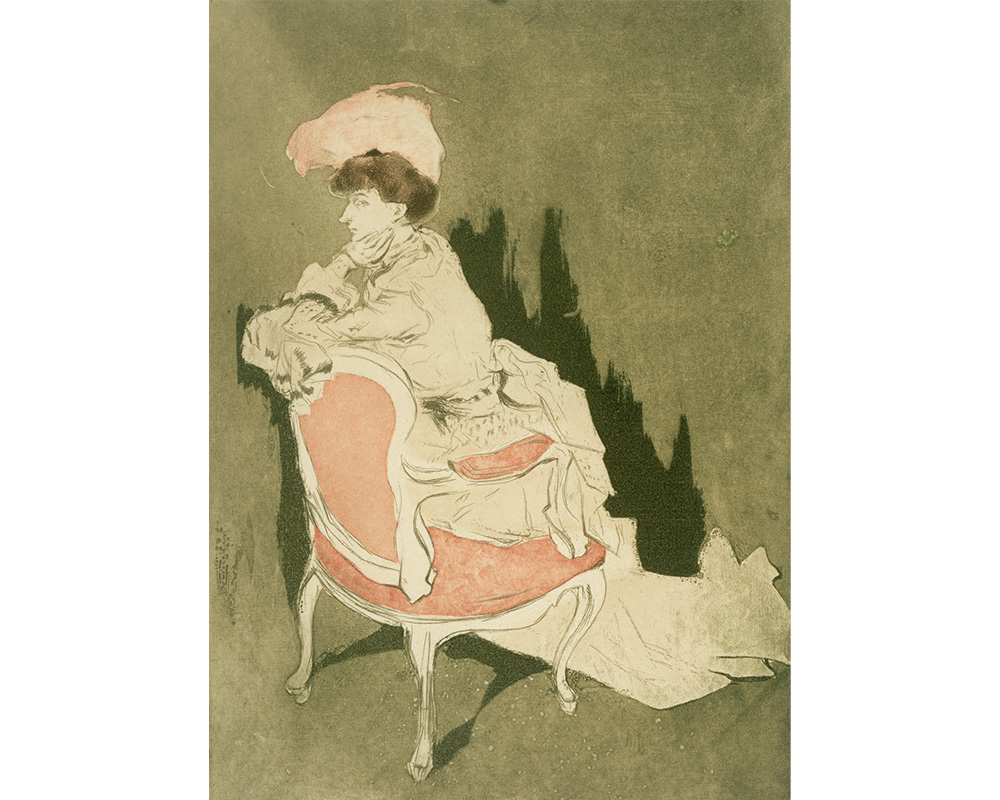
Student Picks: From Tissot to Toulouse-Lautrec - Fashion Focus in 19th-century French Art
Student Picks is a SCMA program in which Smith students organize their own one-day art show using our collection of works on paper. This month’s student curator and guest blogger Amanda Garcia ‘16 discusses her show “From Tissot to Toulouse-Lautrec: Fashion Focus in 19th-century French Art” which will be on view this Friday, April 26th from 12-4 PM in the Cunningham Center for the Study of Prints, Drawings, and Photographs. We hope to see you here!
Impressionists wanted to depict what was actually in front of them - that is, landscapes and figures in contemporary life - rather than reimagining religious or historical scenes. For their interest in representing contemporary life, they are a vital force which allows us to glimpse the French fashion of their time. Post-Impressionists, a term coined by artist and art critic Roger Frye, was Frye’s way of addressing any artist after Manet. While Post-Impressionists created more distorted shapes and lines than their predecessors, they still stuck to the main Impressionist ideals, and are just as vital in representing the fashion in late 19th-century France. From Degas’ depiction of dancers, to Mary Cassatt’s rendition of social life and mother-daughter bonds, to Toulouse-Lautrec’s images of prostitutes at the Moulin Rouge, they all allow us to muse over the garments worn at the time by every kind of person in the social spectrum.
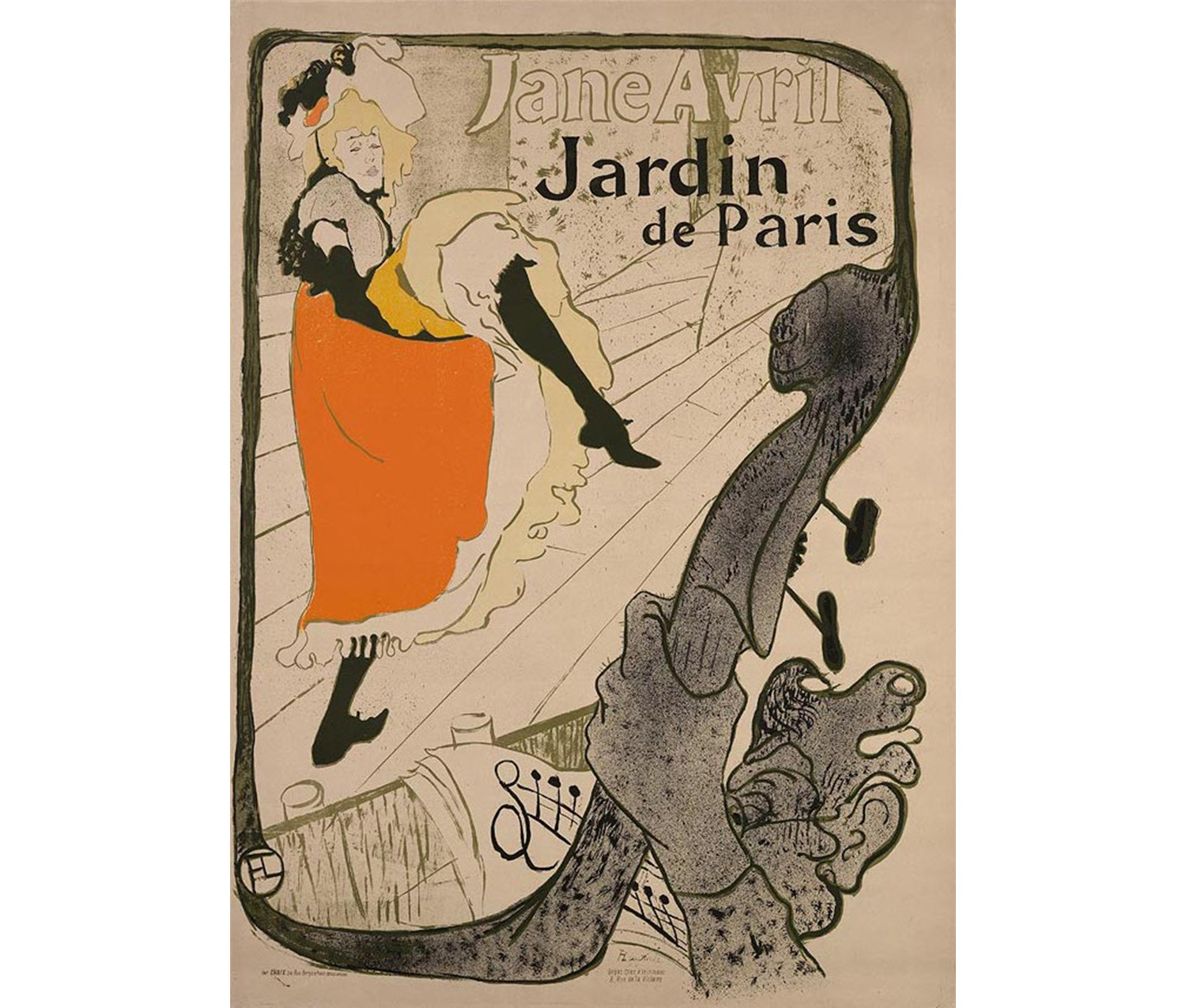
Henri de Toulouse-Lautrec. French, 1864–1901. Jane Avril, ca. 1893. Brush and splatter lithograph printed in olive green, yellow, orange, red and black on beige wove paper. Purchased. Photography by Petegorsky/Gipe. SC 1958.74.
French 19th-century Fashion History:
By 1860, there were many inventions that led to a revolutionized fashion industry: the sewing machine, synthetic dyes which produced intense colors, the new crinoline skirt shape (a flat-domed skirt silhouette), the department store, as well as the fashion magazine.
By 1867, the cage/crinoline was completely out of style, leaving bustles (frameworks which expanded the back of a woman’s skirt) and tournures (“dress improvers” in English) to take their place. Bustles were often stiffened with horsehair to retain shape and give shape of the dress. As seen in many of these prints, the waterfall bustle was particularly popular, which had a cascading bustle down the back. As the skirts were narrower and flatter in the front, more emphasis was placed on the waist and hips. This meant that the corset needed to mold the body to the desired hour-glass shape, and was achieved by making the corsets longer and made of many different pieces of fabric. Whalebone and pieces of leather were also used to increase the rigidity of the corset.
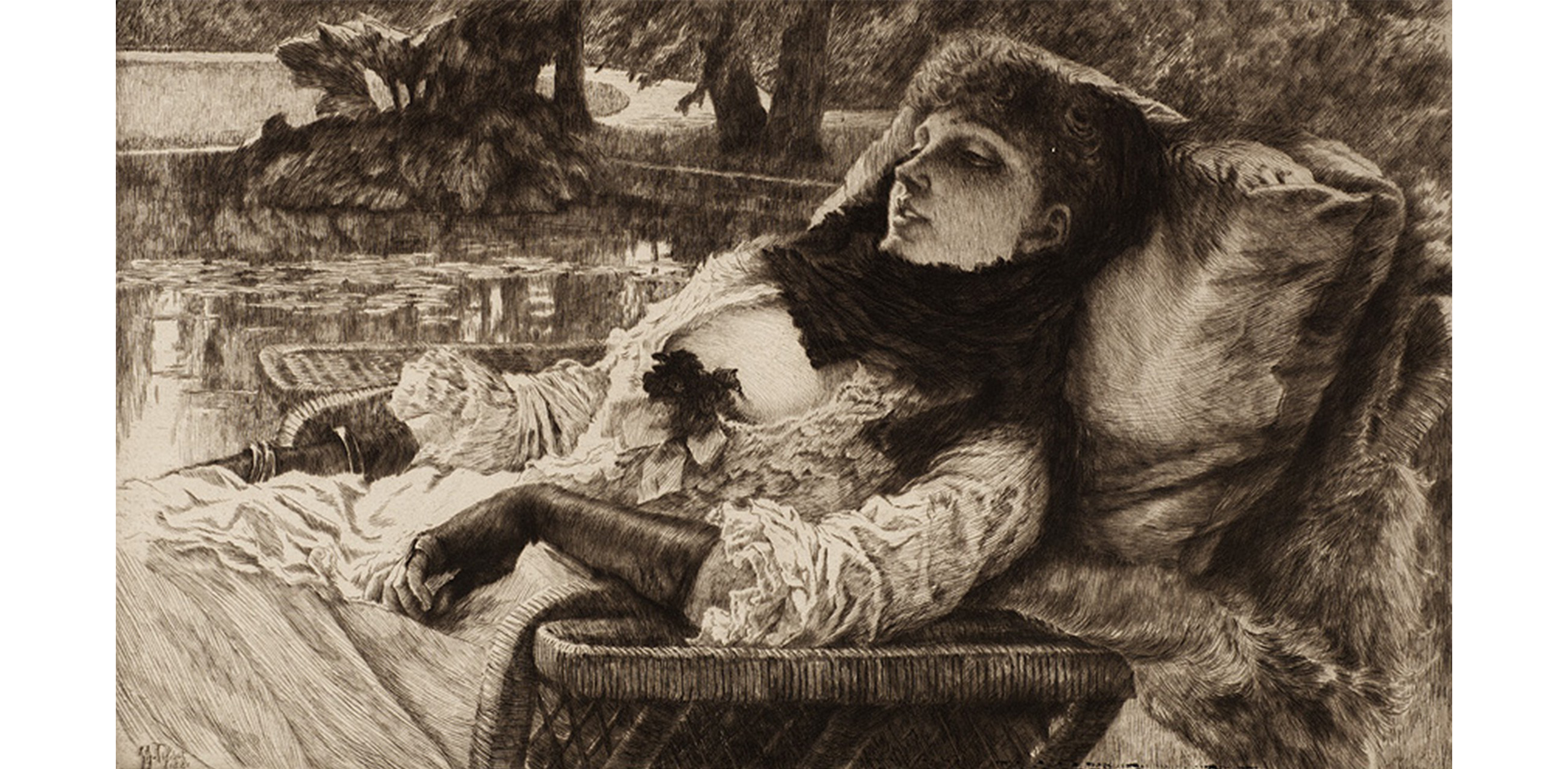
James Jacques Joseph Tissot. French, 1836–1902. Soirée d'été, 1881. Etching and drypoint on paper. Purchased. Photography by Petegorsky/Gipe. SC 1968.1.1.
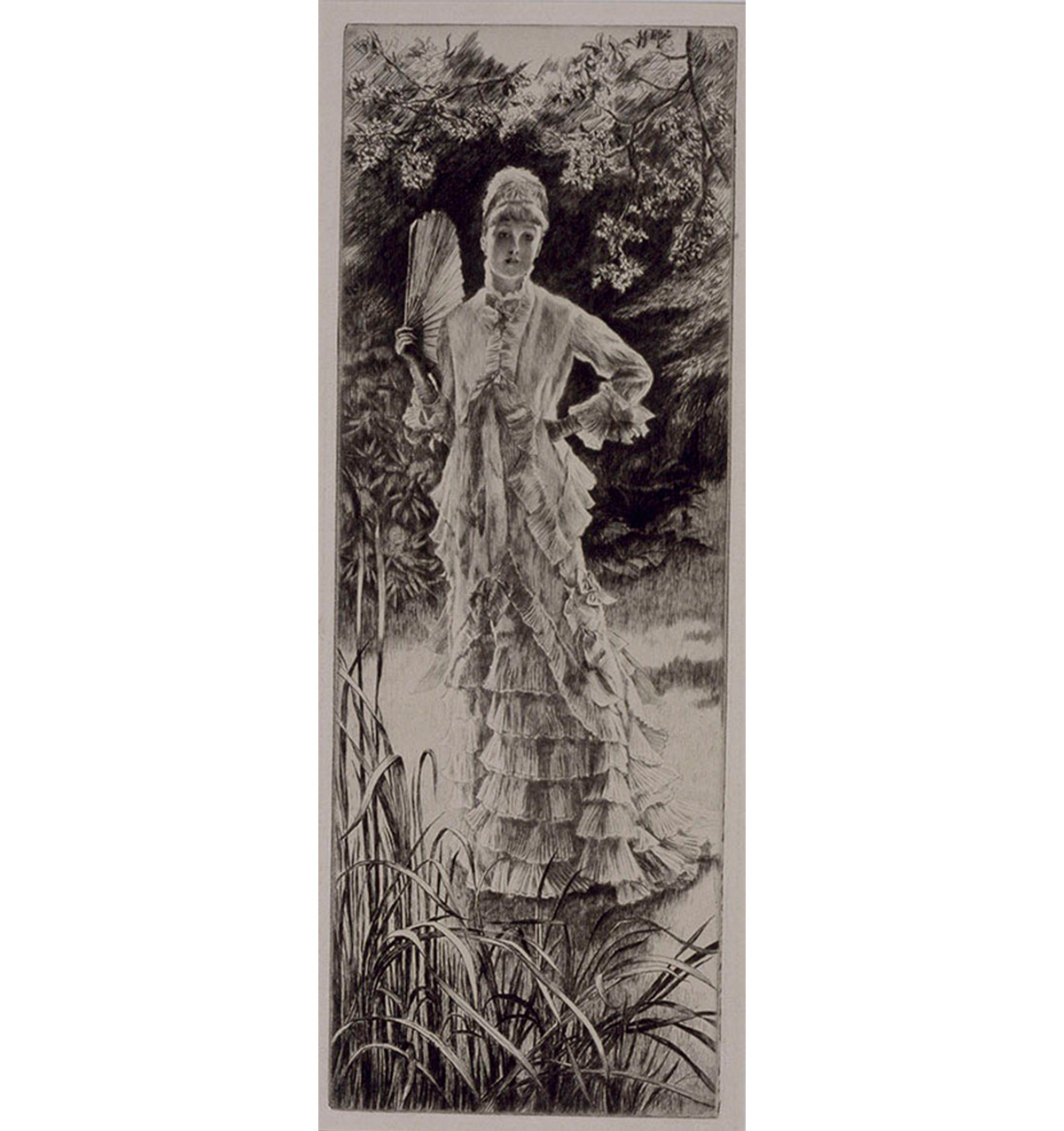
James Jacques Joseph Tissot. French, 1836–1902. Printemps, 1878. Etching and drypoint on paper. Purchased. Photography by Petegorsky/Gipe. SC 1968.1.2.
Featured in many of the prints, parasols had also become a fashion staple, while bonnets, the women’s headpiece of the earlier 19th-century, decreased in popularity due to their reduced functionality. Hats, like the Glengarry Highland cap, Tyrolean style peaked crown hat, and little doll hat were reintroduced at the end of the 19th-century. Women who wanted a more modest appearance wore bonnets, but these were later associated with a more matronly appearance. Very tall hats (called 3-story or flowerpot hats) soared atop very high hairstyles.
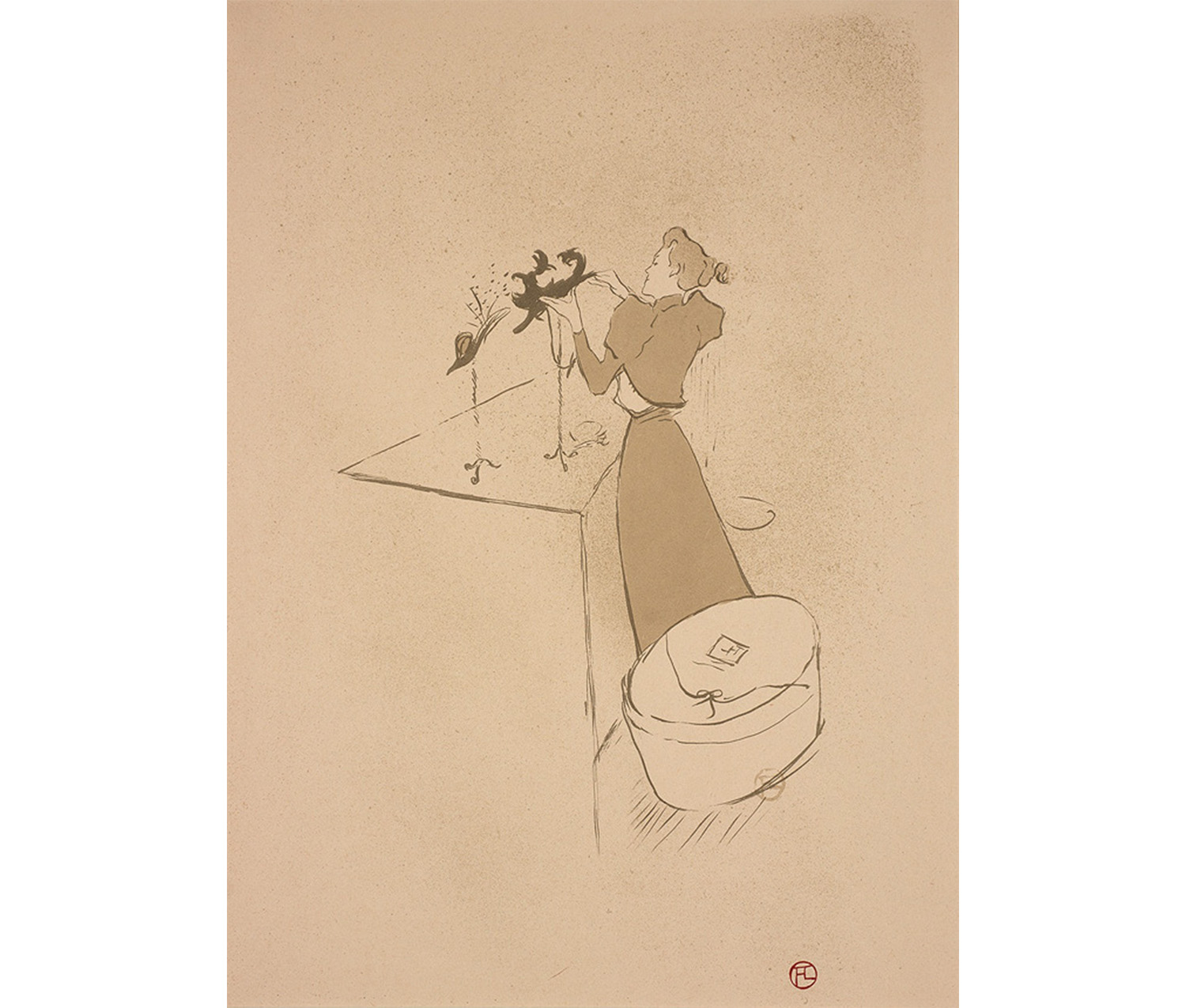
Henri de Toulouse-Lautrec. French, 1864–1901. La Modiste (Renée Vert), ca. 1893. Brush and splatter lithograph in two shades of olive green on ochre wove paper. Gift of Selma Erving, class of 1927. Photography by Petegorsky/Gipe. SC 1972.50.99.
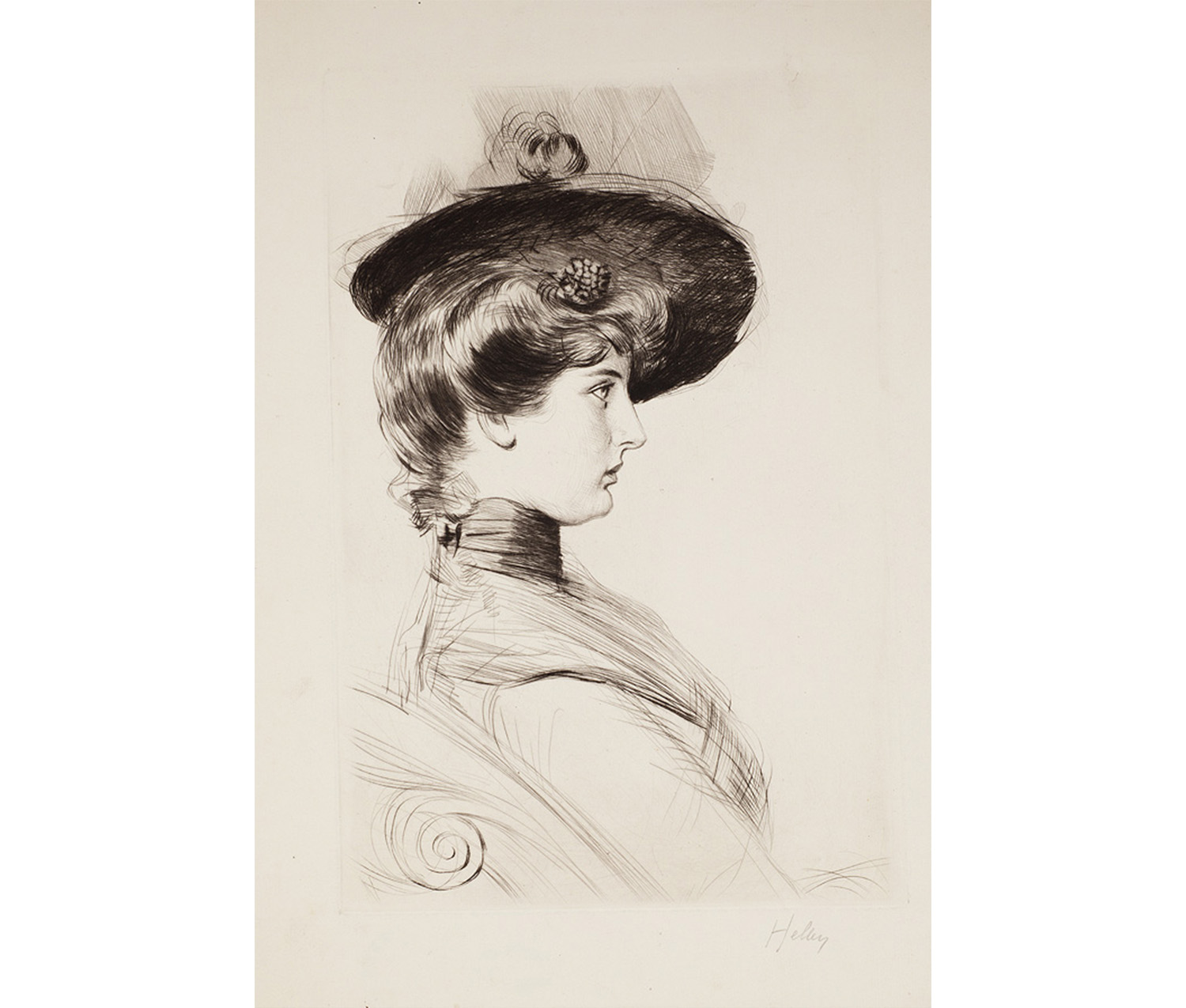
Paul César Helleu. French, 1859–1927. Woman in Profile Wearing a Hat, n.d. Drypoint on modern laid paper. Gift of Lessing J. Rosenwald. Photography by Petegorsky/Gipe. SC 1951.18.
I hope you can begin to notice all of the different garments and styles included in the 19th-century prints which will be presented in the Cunningham Center for Prints, Drawings, and Photographs at SCMA on Friday!